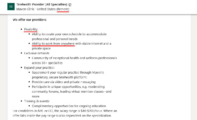The growing prevalence of international climate reporting standards and regulations means that businesses need to know where they stand in relation to a constantly shifting legal landscape.
Task Force on Climate-related Financial Disclosures (TCFD) reporting is now standard for most companies while Taskforce on Nature-related Financial Disclosures (TNFD) released its fourth and final framework in March and is expected to launch this year.
For boards everywhere, the regulation to watch will be the ISSB (International Sustainability Standards Board) which will help define how sustainability and ESG can be quantified on a balance sheet and what data is needed to measure it.
Alphabet soup
John O’Brien, Decarbonisation Partner at Deloitte told FinanceAsia that investors risk becoming lost in what he called an “alphabet soup of regulatory acronyms”.
However, he said the problems around impact washing are expanding so fast, that it is pushing companies to think harder about what they do and say.
“There is an increased demand for transparent tracking, monitoring and reporting,” he told FA. Meanwhile, the problem often lies in the exponential growth of the impact investing sector itself.
“Overall impact investing is growing strongly but it still suffers from inconsistent definitions,” he said. “There is an ongoing transition from this being a philanthropic pursuit to a genuine investment option with targeted investment returns.”
According to figures from Research and Markets, the global impact investing market grew from $420.91 billion in 2022 to $495.82 billion in 2023 at a compound annual growth rate (CAGR) of 17.8%. As to the future, the impact investing market is expected to grow to $955.95 billion in 2027 at a CAGR of 17.8%.
Increased focus
Claims of impact washing – in particular where regular bonds that are not driving new impacts for environmental and social outcomes are simply rebranded – are now being taken seriously by organisations and their compliance divisions.
“So far, there have been very few cases of climate litigation for misrepresentation but this is very much in the pipeline for those funds that are not clearly tracking and reporting the realised impact from those finances that claim to be impact-related,” he said.
“The areas that have criticism are those that have results that are hard to quantify or where the investment is just rebranded debt funding that would have been provided anyway,” O’Brien said.
“Impact funds that have worked very well have been impact bonds where government provide payments to private investors who deliver programs with clear measurable outcomes.”
Litigation ahead
For the moment, regulations governing impact washing are only covered by existing laws, but analysts believe this will not last for long.
“Whilst there are standards emerging on impact investment, as yet there is no regulatory frameworks requiring compliance,” O’Brien says. “The key litigation tool is Corporations Law which in most countries enables complaints and action to be taken against companies for ‘deceptive and misleading conduct’.
“However, there is likely to be increasing impact litigation for those that are not delivering real value.”
¬ Haymarket Media Limited. All rights reserved.






































